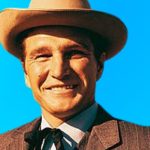For fans of the Western, John Wayne and Clint Eastwood are both legends. Clint Eastwood, being the only of the two that is still with us, was and still is an untouchable icon of the big screen. John Wayne’s reputation has taken a bit of a hit in recent years due to the resurfacing of some controversial remarks that he made in an interview with Playboy magazine back in the ‘70s, but it’s undeniable how influential he was to the western film genre.
You would think that Wayne and Eastwood would have been best buds. After all, they seemed to have a lot in common. Despite the fact that they both contributed heavily to the development of the western and frequently played very similar kinds of roles, albeit with drastically different approaches, at one point in their shared time on this earth, they couldn’t stand each other.
If you like your westerns with an added dose of drama, keep watching to learn all about the nasty feud that developed between these two Hollywood heavyweights. Facts Verse Presents: Why John Wayne Felt Threatened by Clint Eastwood.
Two Distinct Visions
Eastwood directed and starred in the 1973 film High Plains Drifter. Although the film is now considered to be a timeless classic, John Wayne couldn’t stand it. Since Wayne was Eastwood’s senior and had been an icon in the western genre for quite some time before Eastwood showed up and started making waves, Wayne’s hatred for High Plains Drifter could arguably be seen as a moment in which he attempted to knock Eastwood down a few pegs on the metaphorical ladder. It’s fairly obvious that he felt threatened by the up-and-coming film star, and really, who could blame him? For years, Wayne had been the reigning king of the Western. So, to see some young, hot shot come out of nowhere and suddenly become the hot new thing, must have been a pretty bitter pill for John to swallow.
High Plains Drifter was the second film that Eastwood had directed, and it was released at the peak of his popularity, just two years after his crime thriller Dirty Harry firmly established him as a pop culture mover and shaker. Eastwood’s filmmaking, right out of the gate, was a tour de force, and John Wayne no doubt felt like his position at the top of the western world was put into jeopardy upon Clint’s arrival to tinsel town.
High Plains Drifter was met with critical acclaim. The film tells the tale of a mysterious stranger who is convinced by a town to defend them against a triad of sinister crooks. While Eastwood’s character agrees to help the townfolks, his motives aren’t entirely pure.
Eastwood revealed in his memoir, Ride, Boldy Ride: The Evolution of the American Western, that while critics seemed to have nothing but praise for the film, there was one particularly boisterous cowboy that wasn’t singing it any praises.
Apparently, Wayne sent Eastwood a scathing letter complaining that the film wasn’t really about the people who pioneered the west. But while Wayne was getting bent out of shape because of the supposed historical inaccuracies found in the film’s script, Eastwood was never really trying to go for authenticity. He was a young artist at the time who was trying to take the next generation of westerns into a new direction. Since Wayne was a part of the ‘old guard’, it’s not surprising that he took offense to the liberties that Eastwood was taking. After all, people historically hate change with a fiery burning passion.
In his book, Eastwood clarified that when making High Plains Drifter, he intended for it be taken as a fable. It wasn’t ever meant to depict the real-life drudgery that was pioneer life, nor was it supposed to be about the settling of the western frontier.
Eastwood’s “Drifter” was far darker and more violent than Wayne’s films typically were. In your average John Wayne film, you’d essentially get a grabbag of tropes about good verses evil. The characters that he would play usually conquered the forces of evil with their innate goodness as their primary weapon. They hardly ever needed to pick up a gun to bring about order, nor did they have to scare people with their intimidating presence.
Eastwood, on the other hand, often played characters that were dark and broody, exceptionally mysterious, mostly silent, and far more violent. Clint tried to give audiences action-packed adventures that were dripping in style. He was far less interested in providing viewers with a history lesson, and really, that’s okay. That’s what art is all about – taking risks, experimenting, and breaking new ground.
It’s not hard to see how as time passed, Eastwood and Wayne began to see each other as occupying two very different creative realms. As Eastwood stepped into his element and found his directorial niche, Wayne leaned even further into his cowboy image. And while Eastwood spent more and more time taking the behind-the-camera director seat following the height of his acting career, Wayne played his cards quite differently.
Apparently, Wayne took that old bit of cliché western dialogue, ‘this town ain’t big enough for the two of us’ to heart. Since he came from a very different generation of cinema than Eastwood, he felt like it was his duty to uphold certain ideals that the younger crowd was beginning to question and outright abandon.
Wayne was very sensitive about what he perceived to be the cultural shift towards nihilism. Since morals and values are what defined his career and the iconic characters that he played on screen, it’s not really that surprising that he felt so threatened by Eastwood. It’s likely that he didn’t even really have a problem with Clint as a person per se, but rather, what he took issue with was what he felt he represented.
There was a changing of the guard taking place and Wayne probably felt like he was in danger of being tossed into the trash can like yesterday’s newspaper.
When Dirty Harry was in pre-production, Wayne actually turned down the lead role. Since that film went on to turn Eastwood into a superstar, it’s possible that Wayne felt some resentment. This probably wasn’t the source of their beef, but it probably didn’t help things either.
Clint and John never got a chance to work together. Maybe if they had, they would have been able to find more common ground. Despite never appearing on screen together, they did meet once when Clint visited the set of Wayne’s 1976 film The Shootist.
Even then, Eastwood could see the writing on the wall. While John continued to appear in what he called ‘comfort westerns’, some of which were still moneymakers, it was evident that a shift was taking place. The times, as Bob Dylan said, were a’changing. Audiences were wanting to see something new. Their tastes were changing just like everything else in the world was.
Wayne Turned Down An Opportunity To Work With Eastwood
In the early 70s, an attempt was made to bring these two western icons together onscreen. Even though they represented two very distinct eras for the genre, Larry Cohen, a director best known for B-films like Q: The Winged Serpent and The Stuff, suspected that they could have shared quite a bit of chemistry onscreen if they were given the appropriate script.
Cohen got to work and came up with a script for a western titled the Hostiles. The plot focused on a gambler who won half of the estate of an older gentleman. Eastwood was supposed to play the gambler, while Wayne would play the older man.
After he was told about the concept, Eastwood expressed interest in it, but Wayne outright rejected the role. Not only did he not like the script, but he couldn’t stand Eastwood as an actor and director. He also didn’t care for how the film’s script reflected the shifting trends that were transforming the western genre.
Needless to say, the Hostiles never ended up getting made, although years later, in 2009, a version of Cohen’s film was adapted into a TV movie called The Gambler, The Girl, and The Gunslinger. Sadly, the world never got a chance to see the two biggest giants of the western world on screen together.
Eastwood Still Isn’t Afraid Of Change
John Wayne largely stuck to his guns and kept doing the kinds of roles and films that he was familiar with in his later years. He passed away at the age of 72 on June 11, 1979, and with his death, came an end of an era. He represented the tail end of the old-school western genre, and while many of the films that he appeared in are considered to be classics, he never really experimented too much with his formula. He was, if you will, one of those ‘if it ain’t broke, den’t fix it’ kind of guys.
Eastwood, on the other hand, has never stopped changing, growing, developing, and experimenting. He might have gotten his start as a B-movie and western star, but that merely represented one phase of his artistic journey.
He’s now a two-time Academy Award winner for best director in addition to being a two-time winner of the Director’s Guild of America Award for best director. Over the years, he’s made films spanning many different genres and themes. Today, he’s considered to be right up there with greats like Steven Spielberg and Martin Scorsese.
Throughout his long, storied career, Eastwood has fought against expectations to forge his own path. In the process, he’s become one of the greatest filmmakers of his generation.
It’s actually quite refreshing that Eastwood broke out of his western shell and wasn’t afraid to venture out into unknown waters. If he hadn’t, we would have never gotten films like 2000s Space Cowboys, 2004s Million Dollar Baby, or 2008s Changeling.
As a filmmaker, he has helped guide other actors through the path to greatness. Many of the people that he has worked with have gone on to win Academy Awards – and while they might have done so on their own – it’s obvious that Eastwood’s influence has played a large role in their development.
Unlike Wayne, who was staunchly opposed to change and shifting cinematic trends, Eastwood has routinely leaned into change. Instead of treating it like the enemy, he’s embraced it warmly and done his best to guide the film industry into fertile new ground. As his artistry has matured, he’s never lost his sense of entertainment. Because of this, audiences adore him. And since he takes such great care in creating his films, critics have nothing but praise for him as well.
Did you know that John Wayue couldn’t stand Clint Eastwood and that he felt threatened by what he thought he represented? And were you aware that despite the fact both men were two of the most prominent western stars of all time, they never appeared onscreen together?


